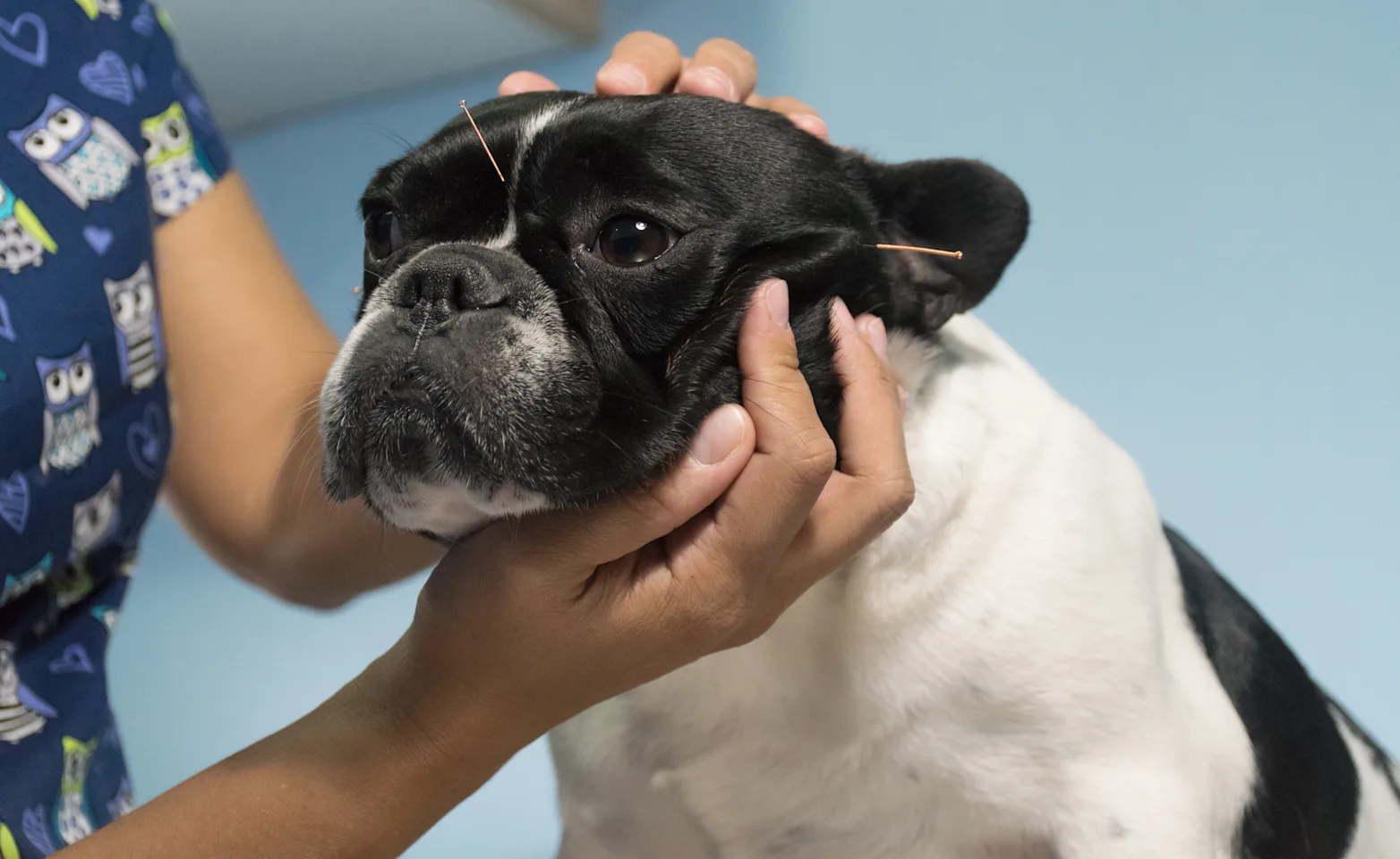Red Bank Veterinary Hospital - Hillsborough

How does Acupuncture Work?
The main therapeutic effects of needling begin with activation of nerve fibers near a point. These stimuli then bring about changes that help to balance nerve signaling and neurotransmitter activity from the “periphery” (i.e., the acupuncture point) to the central nervous system (the brain and spinal cord) and autonomic nervous system centers (that govern processes like glandular activity, immune status, digestion, mood, and more). Acupuncture also releases tension from the muscles and enveloping fibrous network called “fascia.”
Forms of treatment
Acupuncture includes several variations:
Acupuncture
The insertion of small needles under the skin; this is the most commonly utilized form of treatment.
Electroacupuncture
Wires are attached to traditional acupuncture needles and connected to an electroacupuncture stimulation unit. The unit delivers a gentle electrical current to the needles. The electrical current feels like a gentle tingling sensation that promotes relaxation and improves the potency of the treatment. Most animals love electroacupuncture—many fall asleep during treatment!
Acupressure
Needles are not used in this form of acupuncture. A veterinarian applies gentle pressure to the areas where a needle would be inserted. This is beneficial for animals who may be extremely sensitive to the needling and is gentle and soothing. It can also be used with traditional acupuncture with needling to give additional benefits.
Aquapuncture
This type of acupuncture incorporates a water-based solution, typically a vitamin formulation, that is injected into the points where needles would otherwise be inserted. This can give a much longer-lasting version of acupuncture treatment.
Dry Needling
The insertion of needles into myofascial (muscle) trigger points, as a method to release tension and source of local and referred pain.
